In this festive season, my 27th fairy crown celebrates a few stalwart plants that give some structure and life to my garden for the four-to-six months when the soil is completely frozen. I see red hawthorn fruit, aka “haws”, from my beloved Washington thorn tree (Crataegus phaenopyrum). Hanging down over my right shoulder is a bough from one of my gangly hemlock trees (Tsuga canadensis), complete with four sweet little cones. The dark-green prickly needles come from my yew blobs, i.e. the balls of Taxus x media ‘Hicksii’ in my pond garden. Over my left shoulder are bits of lacy arborvitae (Thuja occidentalis), aka “white cedar”, from the very long hedge separating my garden from my neighbour’s. The broadleaf evergreen is wintercreeper (Euonymus fortunei). Finally, the seedheads are purple coneflower (Echinacea purpurea) and snakeroot (Actaea racemosa) sticking out on my right side.
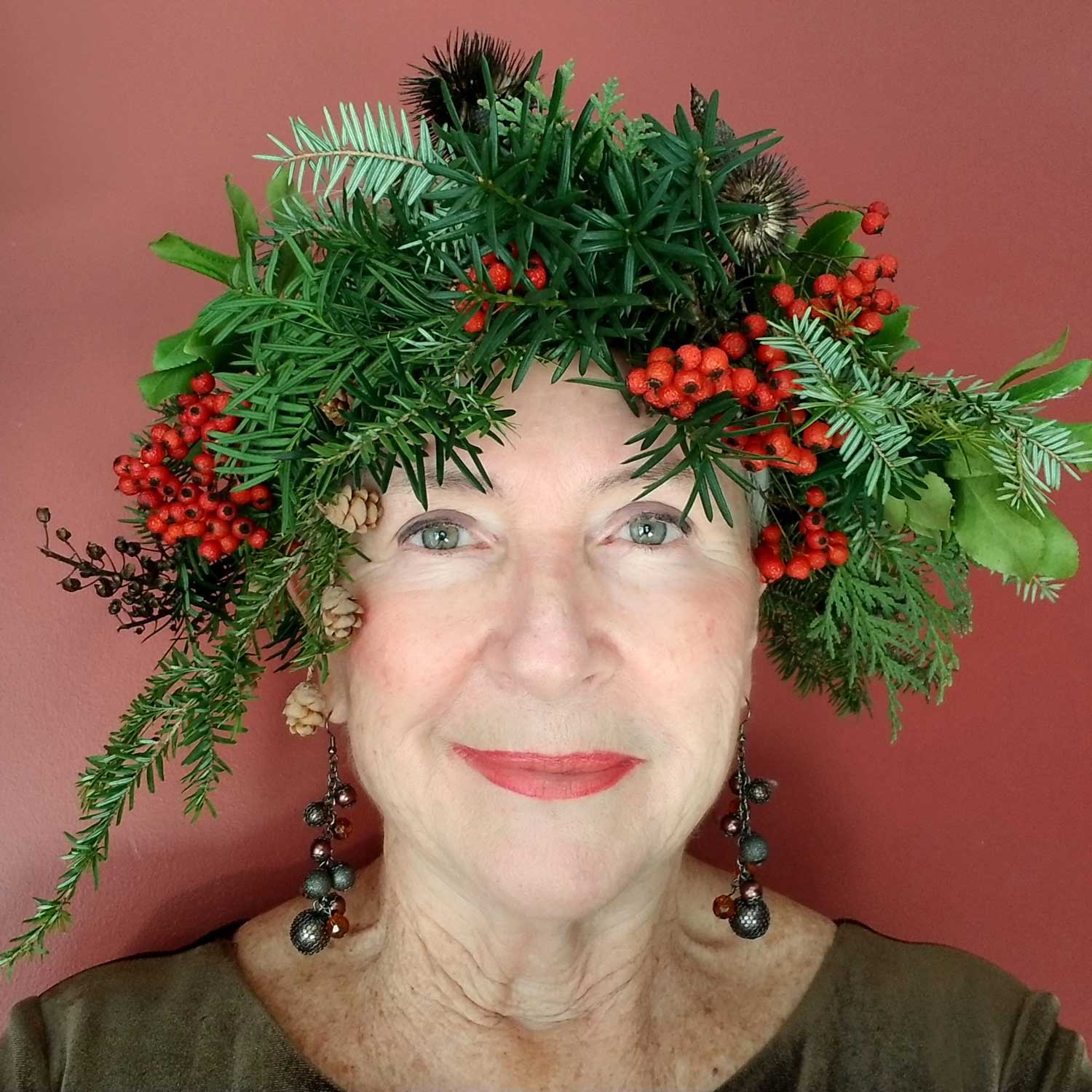
When you garden in Toronto, you learn not to expect too much – aesthetically – from “the winter garden”. Unlike those exquisite December scenes from England, France and the Netherlands of silvery hoar frost delicately coating each leaf and seedhead, December in the northeast is often more like a thick blanket of snow that not only buries all the plants in the garden, but the car in the driveway too! Yes, this was our car on January 17, 2022.
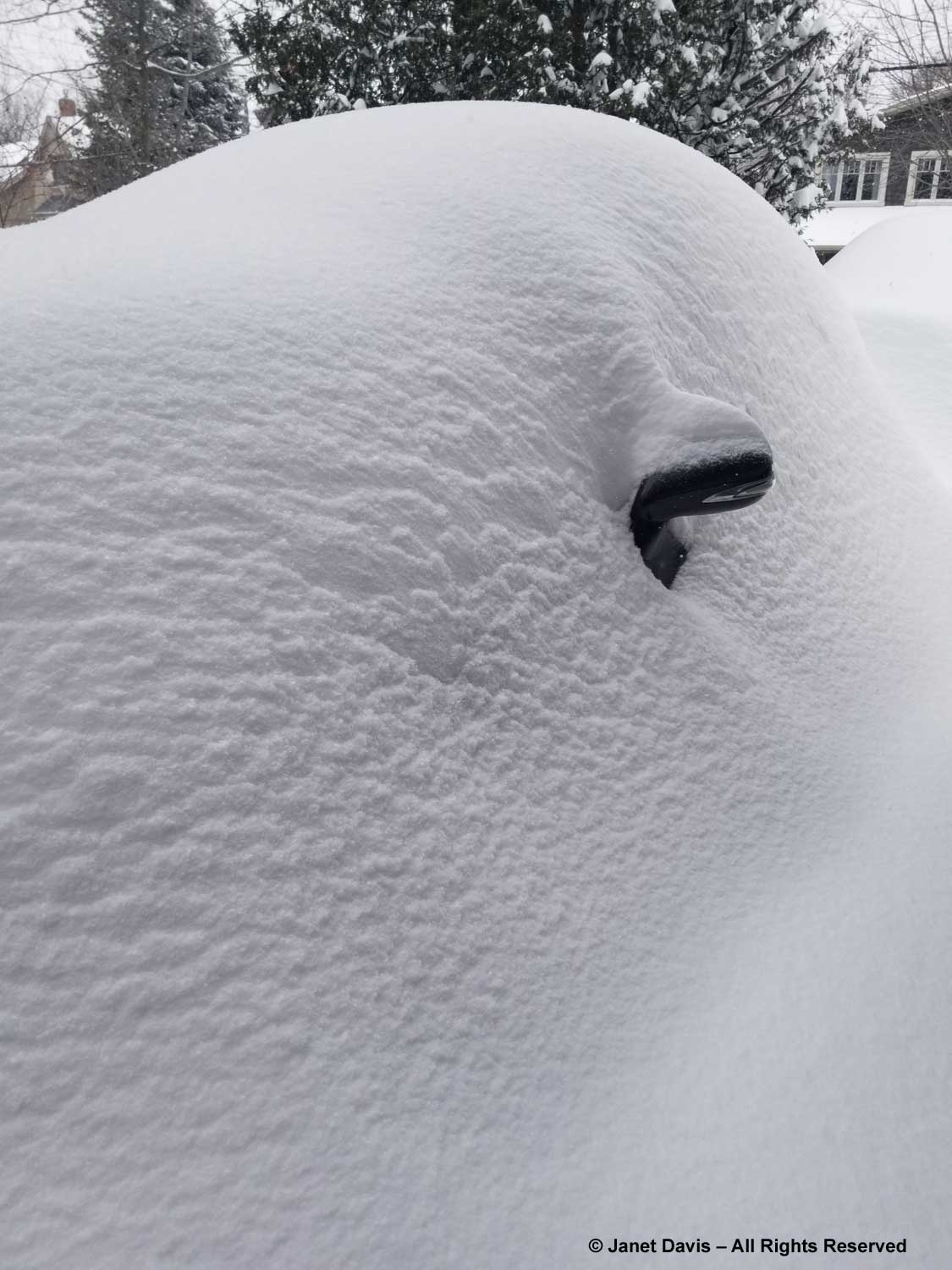
It broke a daily record with a total of slightly more than 21 inches (55 cm).

And it was a very hard slog with the snow shovel for my husband Doug! But I added a little muscle and together we cleared a path to the door.
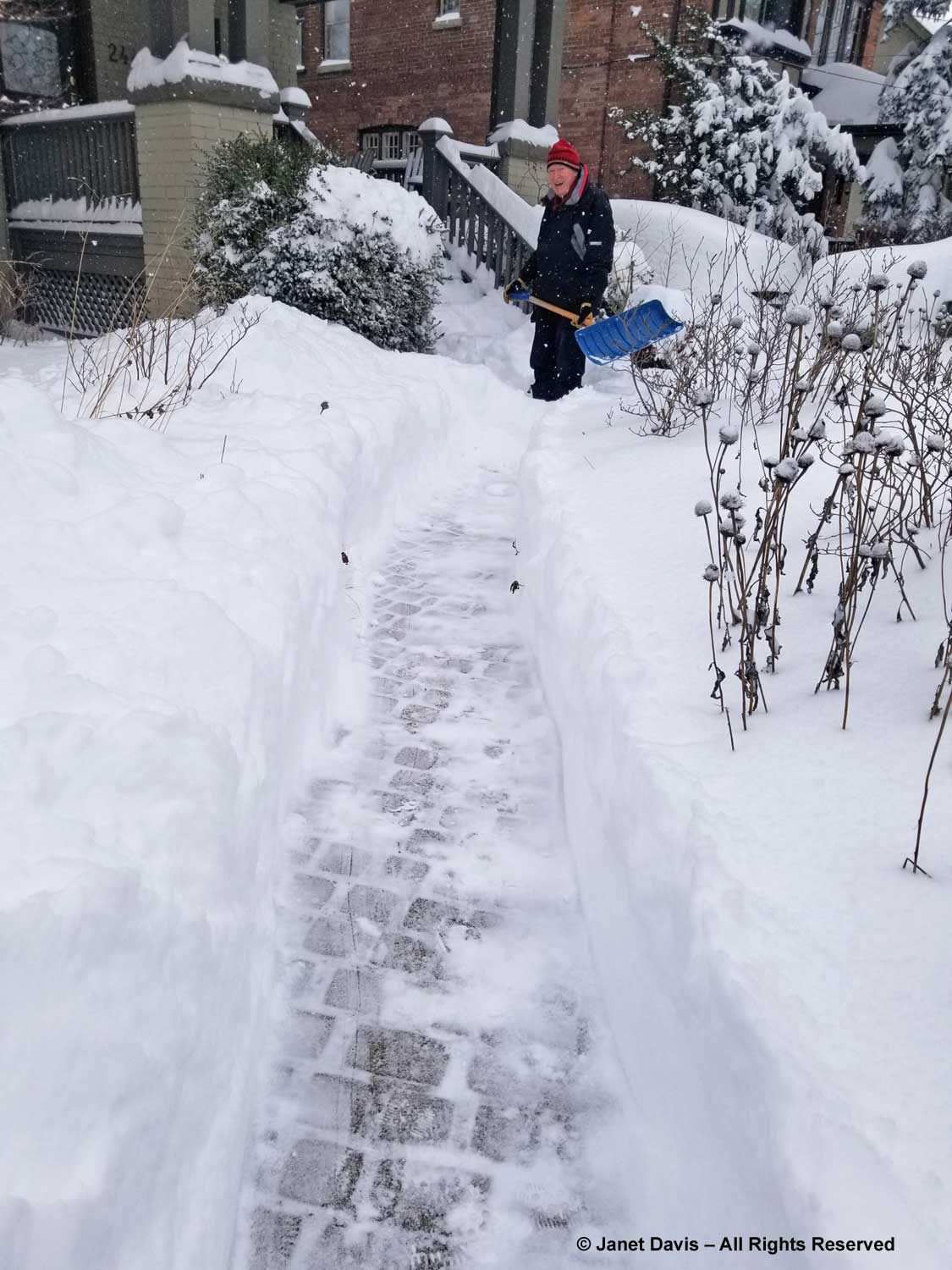
As I write this, there’s a big red weather warning on The Weather Network. “Rain, transitioning to freezing rain, transitioning to snow with expected accumulations of 10-15 centimetres.” That’s 4-6 inches for Americans, not a lot, but in the course of a normal Toronto winter, we can see deep snowfalls, then complete thaws, then sub-freezing temperatures that hit certain plants very hard. Those vagaries are more challenging than a nice, cozy, insulating snow blanket that stays in place until March, like the one in the photo below taken in my garden a few winters back after a less dramatic snowfall than this year’s. Nevertheless, it’s what we have – and why books were invented, i.e. to while away these months before the earliest spring bulbs come into bloom.
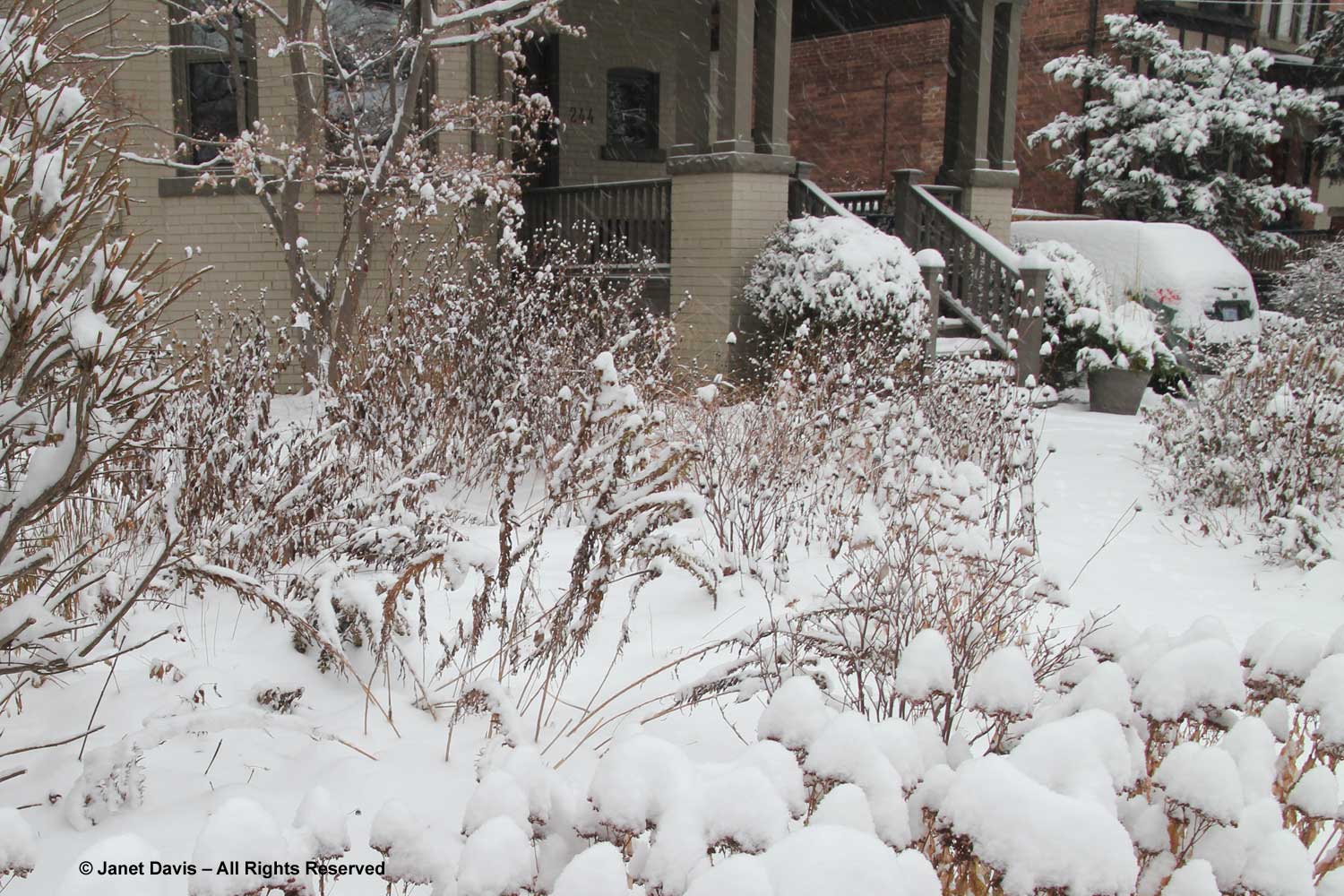
If I stand on my verandah after a normal snowfall, this is my view of the pollinator island. Most of the seedheads of the perennials – echinacea, sedum, perovskia – stand up well through winter, until I cut them all down in March in anticipation of the crocuses.
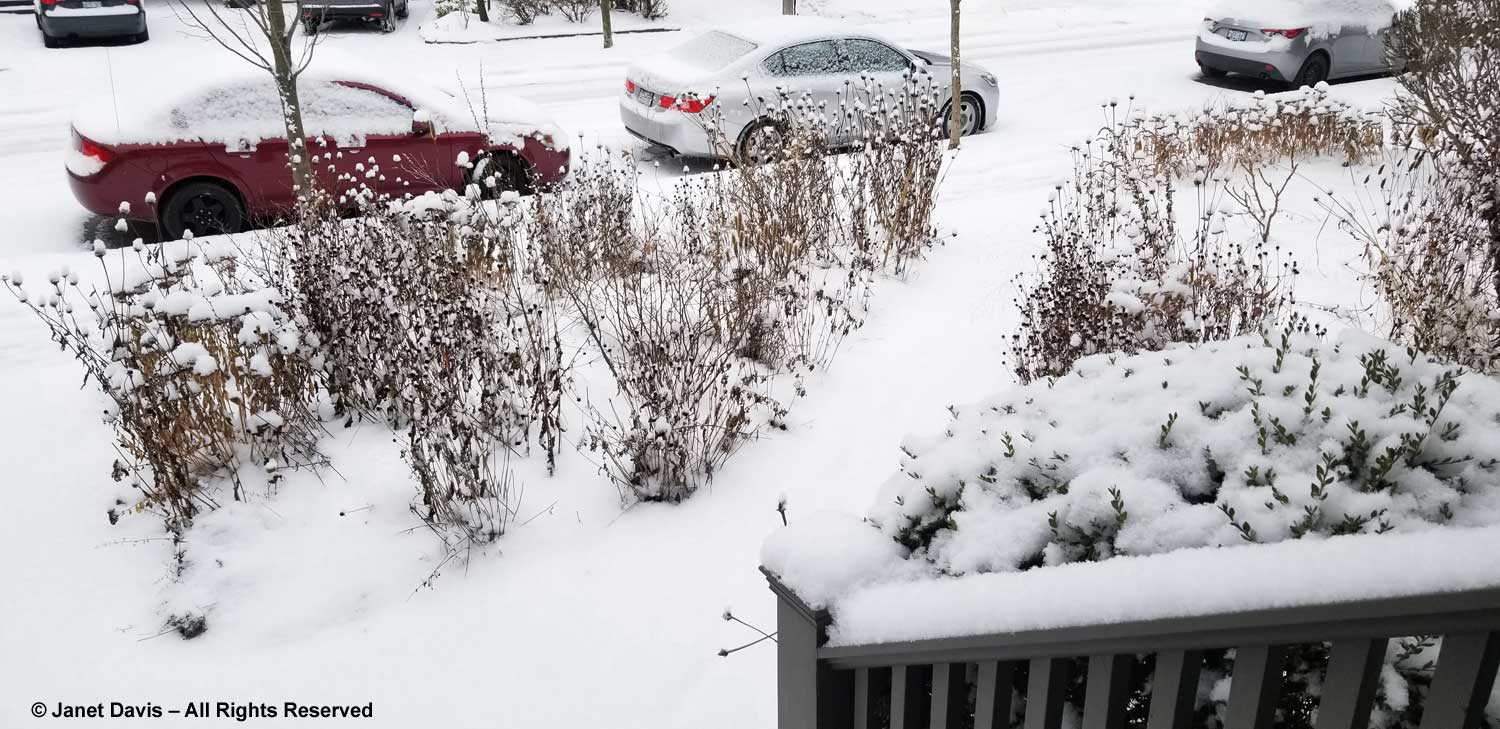
This is dense blazing star (Liatris spicata) that fed so many bumble bees in summer.
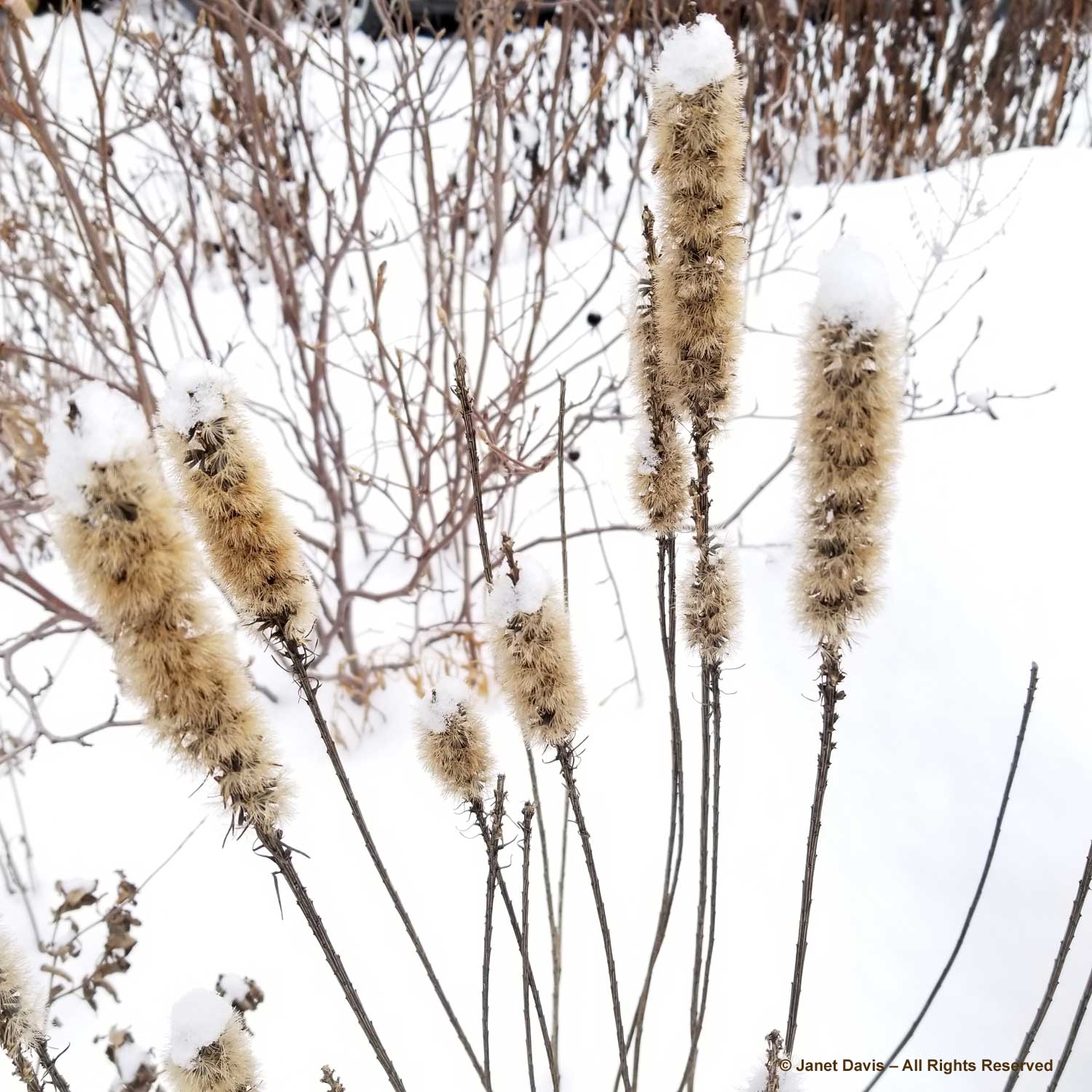
Purple coneflower seedheads were foraged by loads of goldfinches in the autumn and now clearly show off the “cone” of the capitulum.
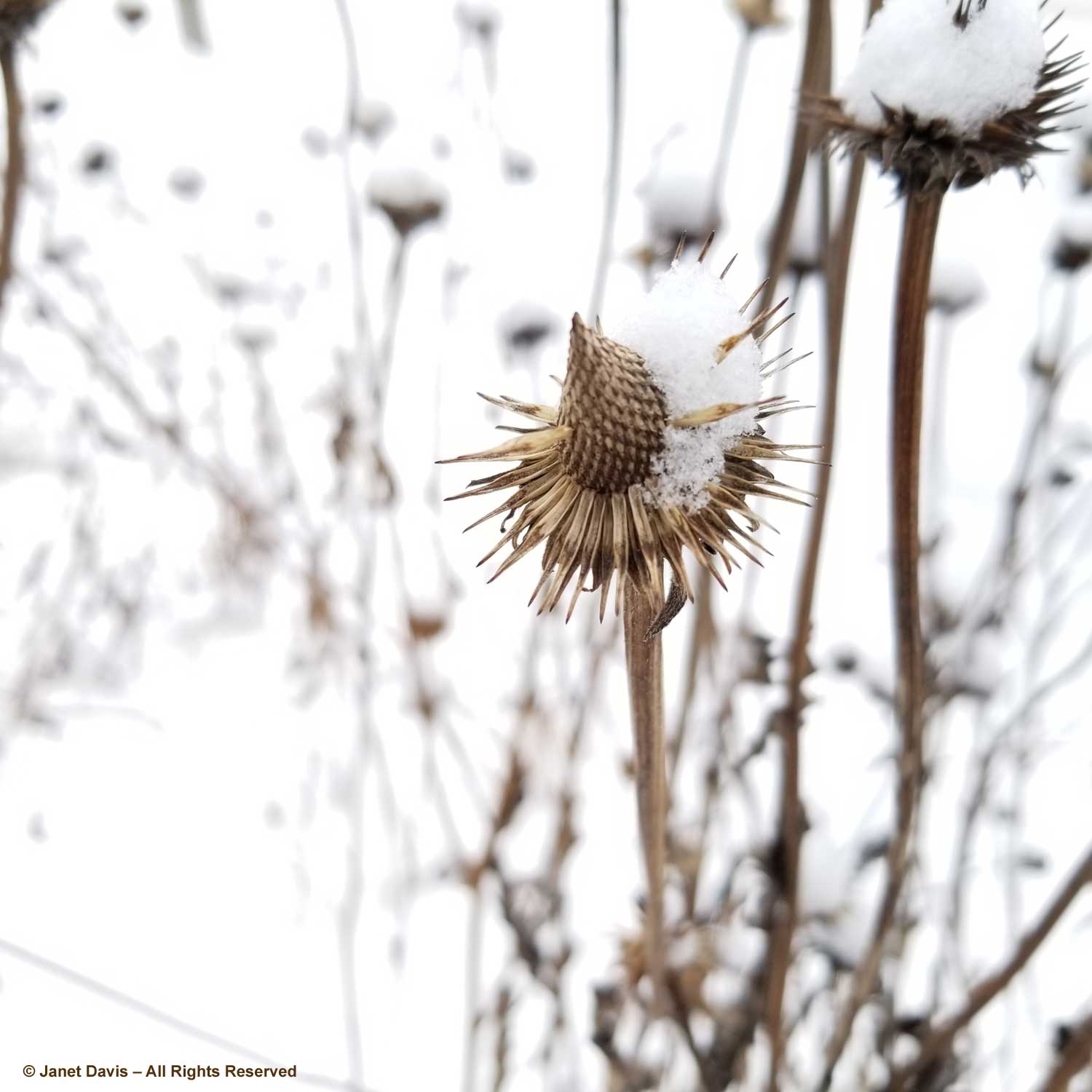
I love the brown “shaving brush” seedheads of New York ironweed (Vernonia noveboracensis).
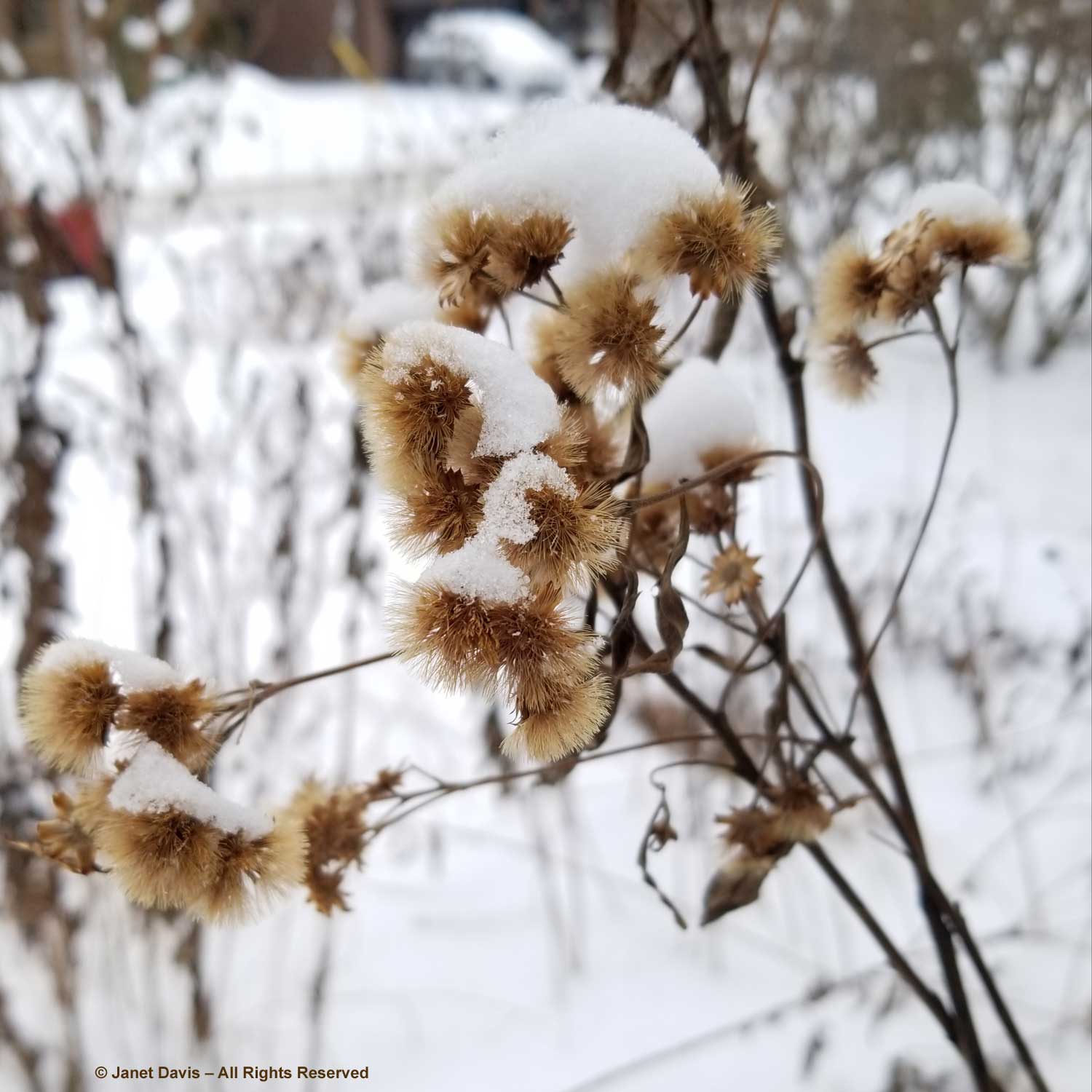
Every year I fill a big pot near my front steps with pine boughs, Magnolia grandiflora boughs with their rich copper-brown leaf reverses and bright-red winterberry boughs (Ilex verticillata). Usually it’s covered by snow within a few weeks, but with melt-and-thaw cycles in winter it does add a little festive touch to the garden.
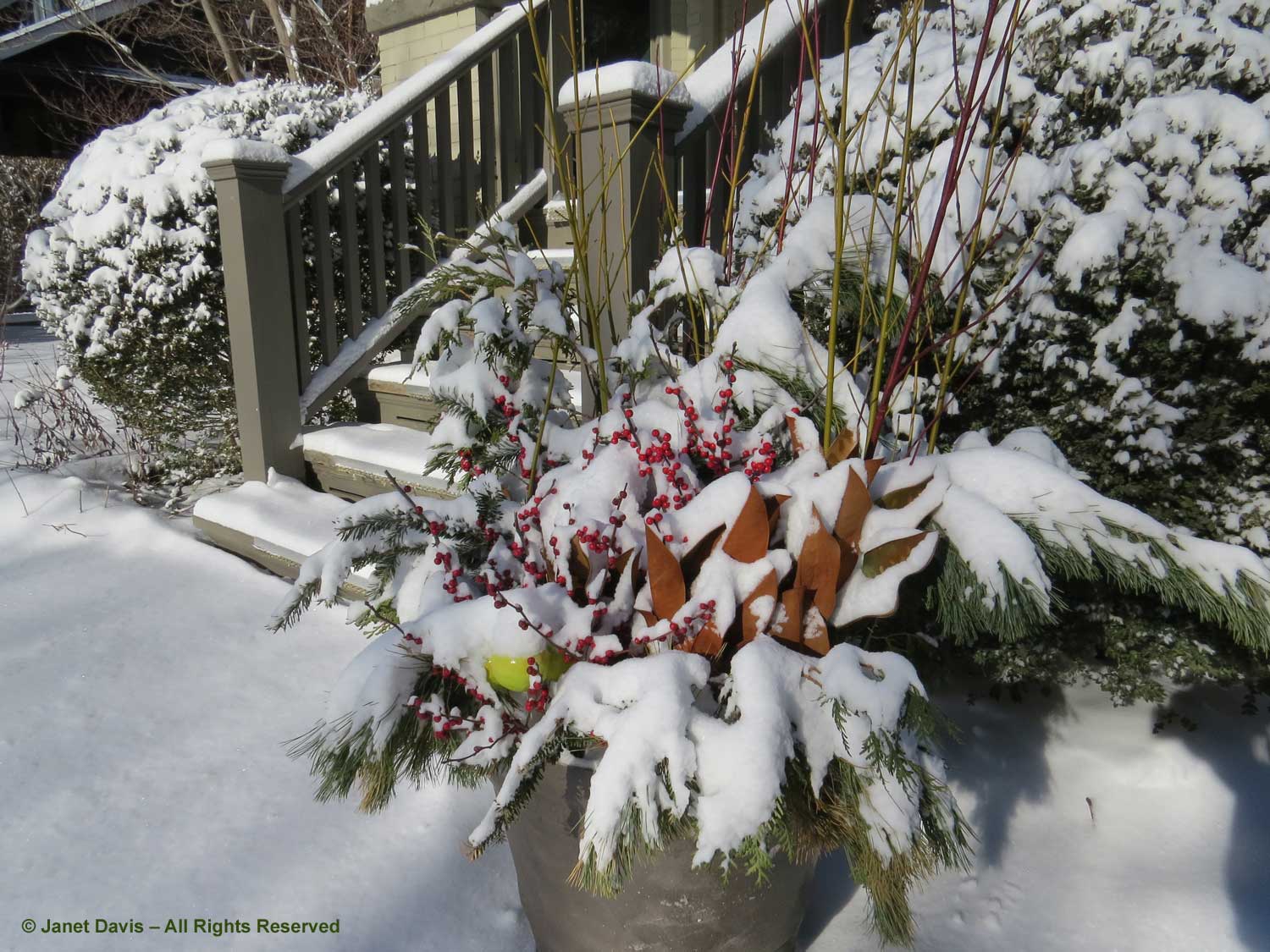
And when we get the Christmas lights up on the Japanese maple and around our front door, the plant silhouettes in the pollinator garden add a natural touch.
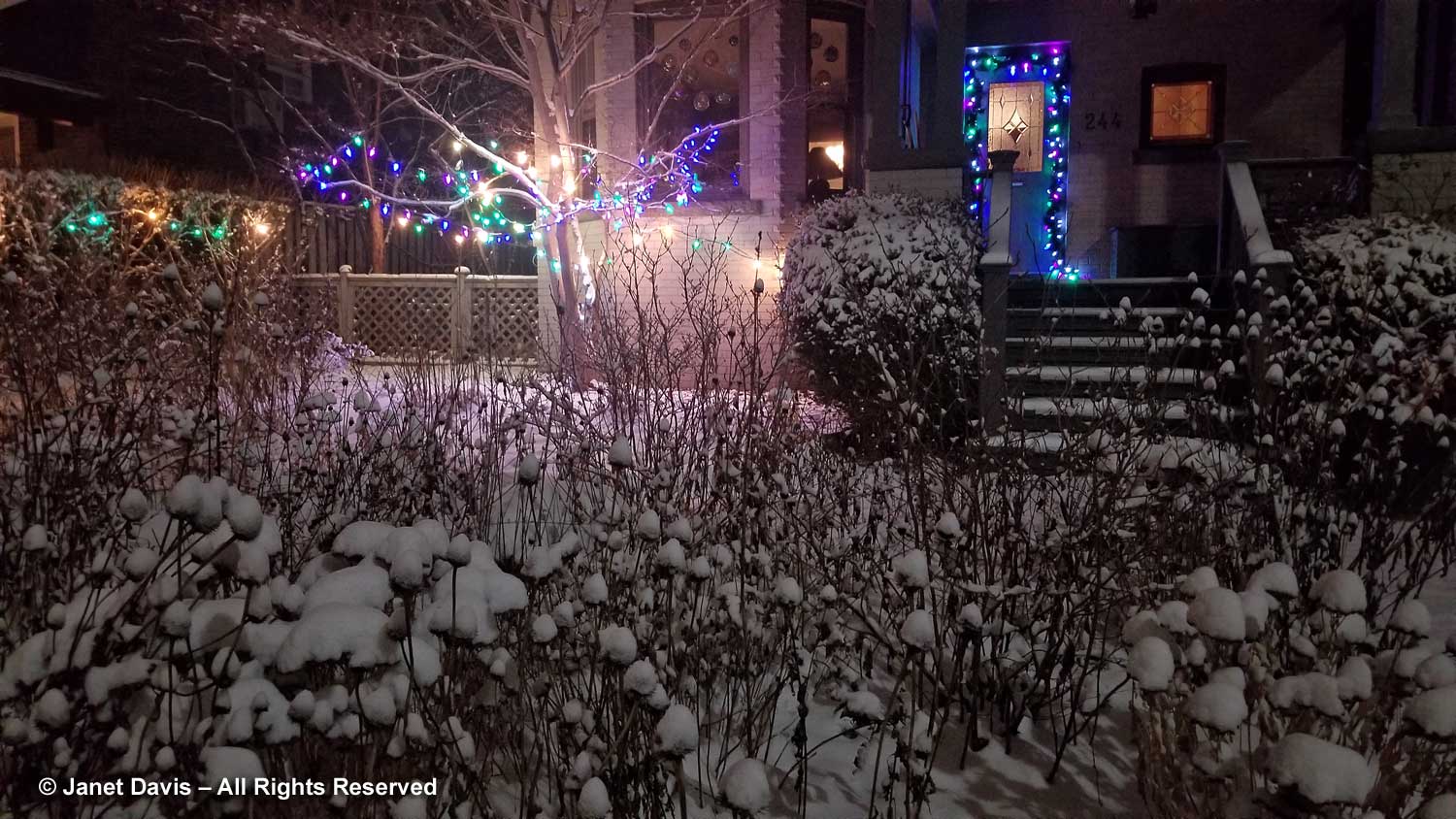
My old garden gate lost its sentry boxwood shrubs this June as we resurfaced the driveway. There was no way to move the whiskey barrels I’d planted them in way back around 1990, since the barrel staves had finally started to break and the 30-year-old boxwoods had begun to suffer.
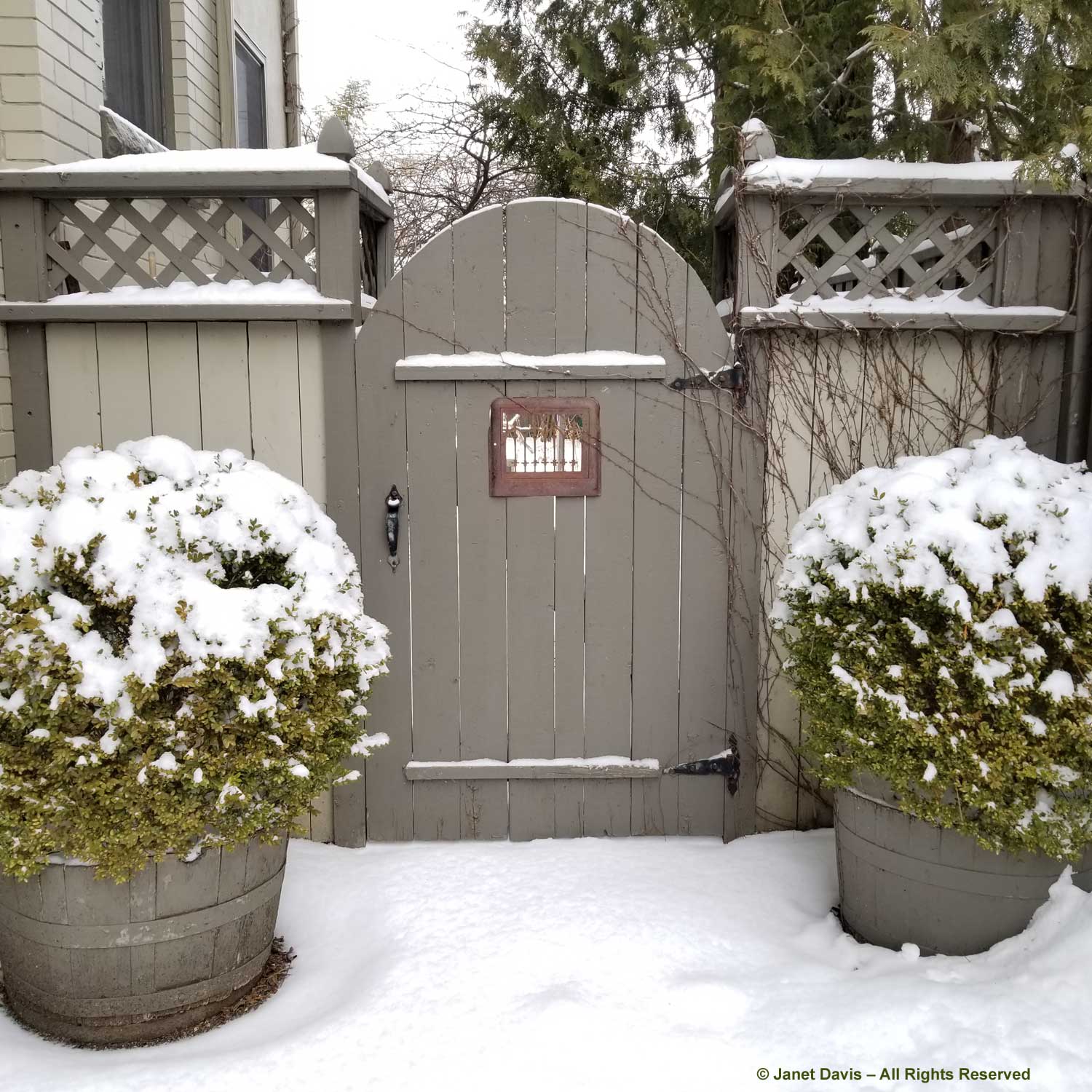
From the back yard deck, my garden always looks lovely in winter…..
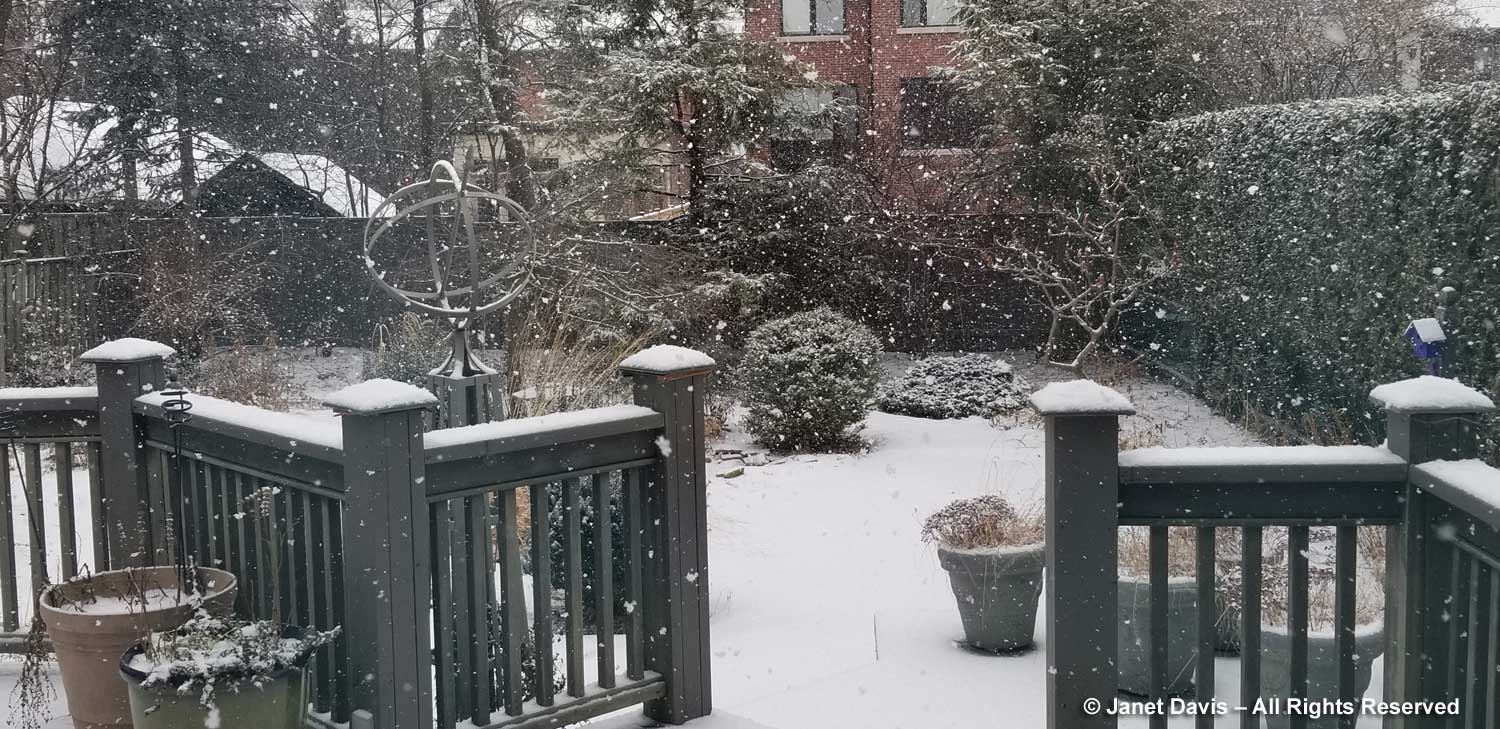
…..even somewhat nicely maintained, which is the miracle disguise of snow! That’s my frozen lily pond in front of the lantern. The shrubs are the Hicks’ yews and that golden grass is Molinia caerulea subsp. arundinacea ‘Skyracer’. Sadly, the crabapple tree was also removed this year, the victim of one of the many blights that hit certain Malus cultivars. I am giving some thought to what its replacement could be, but I do want it to be bird-friendly!
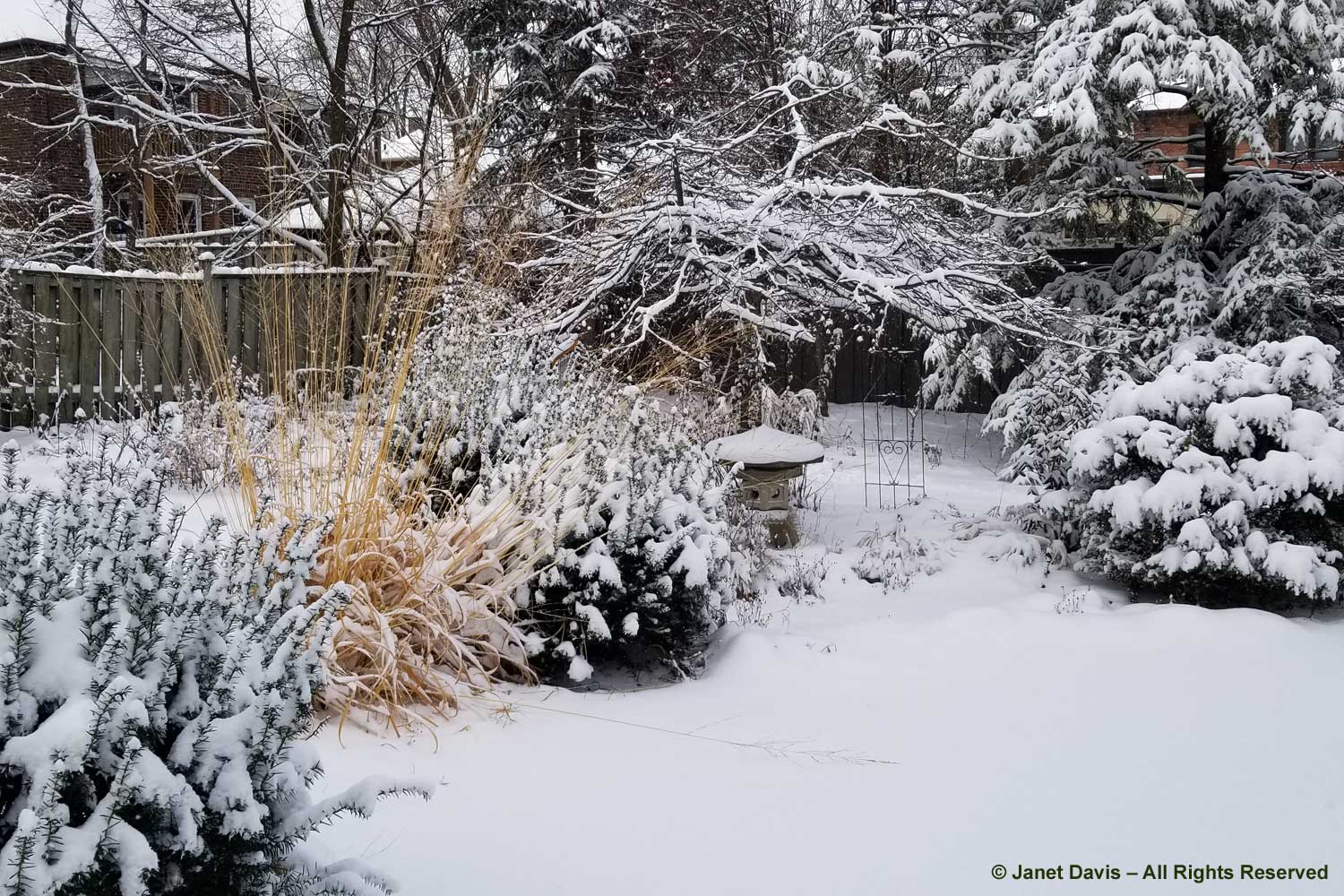
Speaking of birds, they do love the hemlock trees (Tsuga canadensis). I often see “my cardinals” against the green boughs, but it’s black-capped chickadees that make most use of the cones.
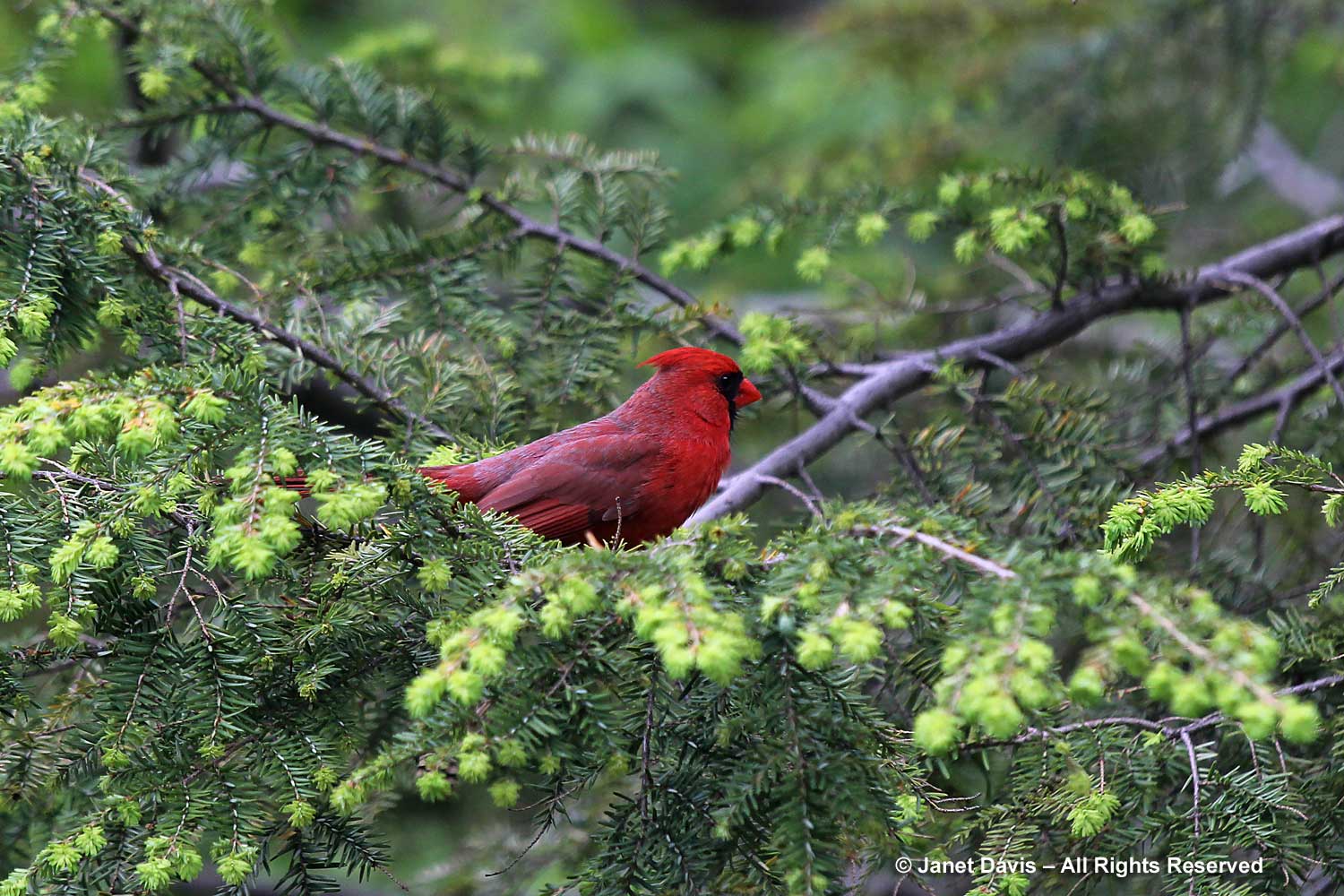
However, the most popular plant in my garden for birds is not actually in my garden, though I pay each year to have a lovely young man come by to shear it, below, once the border perennials have finished for the year and been cut down. It’s my neighbour Claudette’s long arborvitae hedge (Thuja occidentalis), aka “white cedar”. As I’ve written before in my blog about designing a garden for birds, a tall, thick evergreen hedge affords wonderful habitat for birds – and it’s where “my” cardinal family resides, as well as unknown numbers of house sparrows in their own nests.
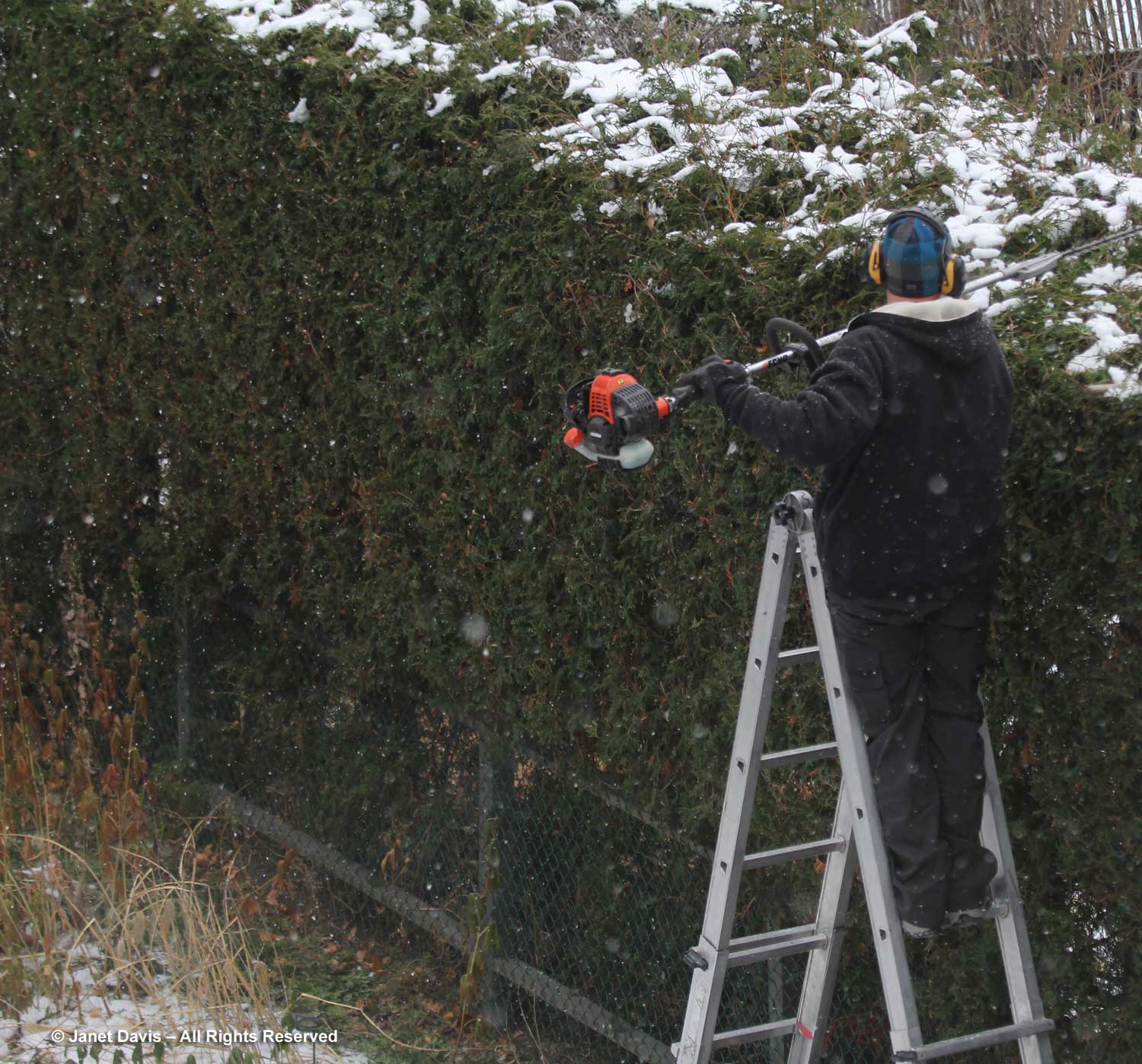
The other tree that shines in winter – and provides those red fruit for my fairy crown – is my Washington thorn (Crataegus phaenopyrum). Birds of all kinds love the berries – and occasionally leave some on the branches so I can photograph the clusters with snowy little caps.
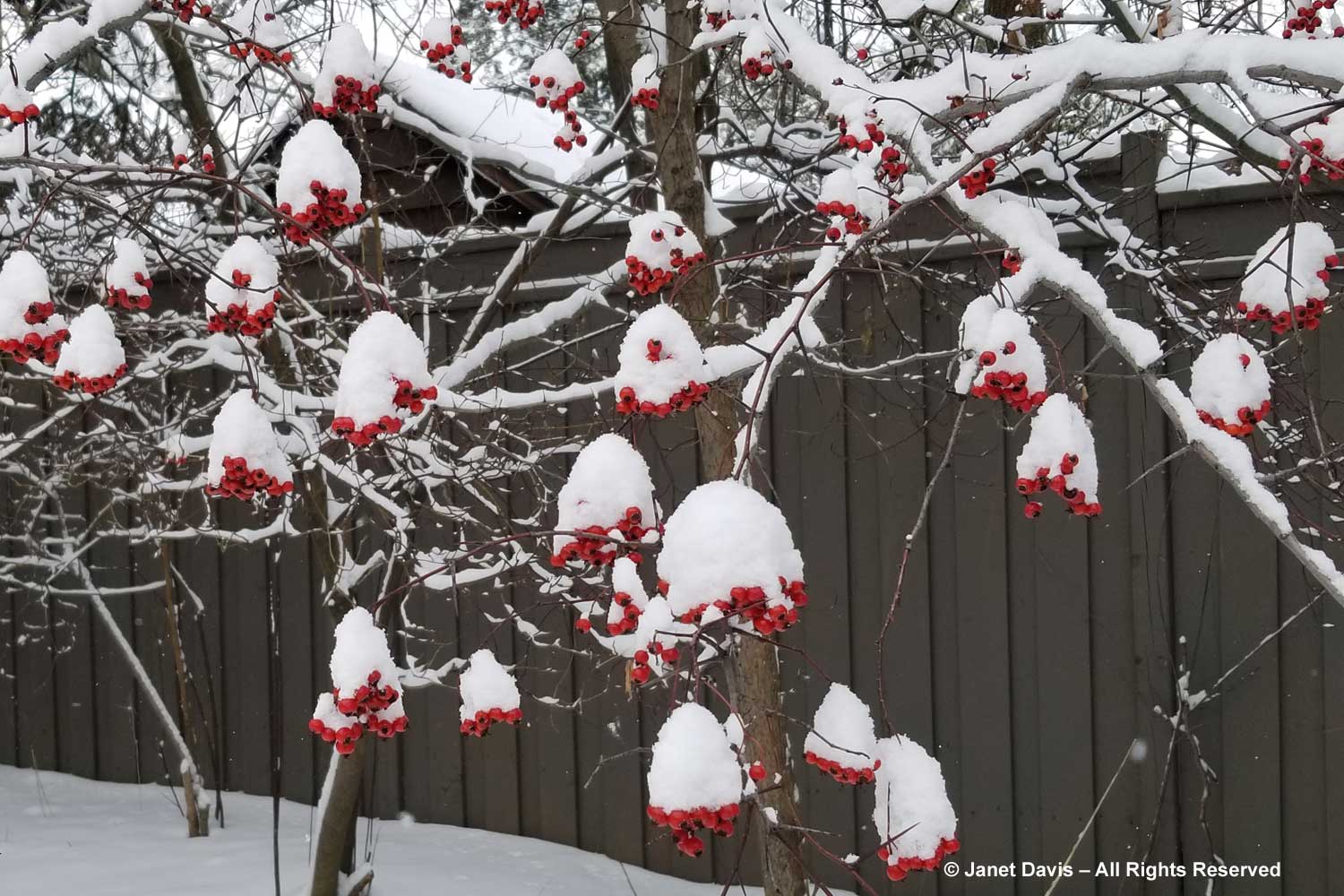
But winter arrives on the calendar in 6 days – even though it always looks like winter long before that here. And like good old Saint Nick, I plan to do a little napping, plus a little reading, and a lot of photo-editing through the long months of winter that stretch ahead! After all, that view from inside the house through the witches’ balls is very inviting!
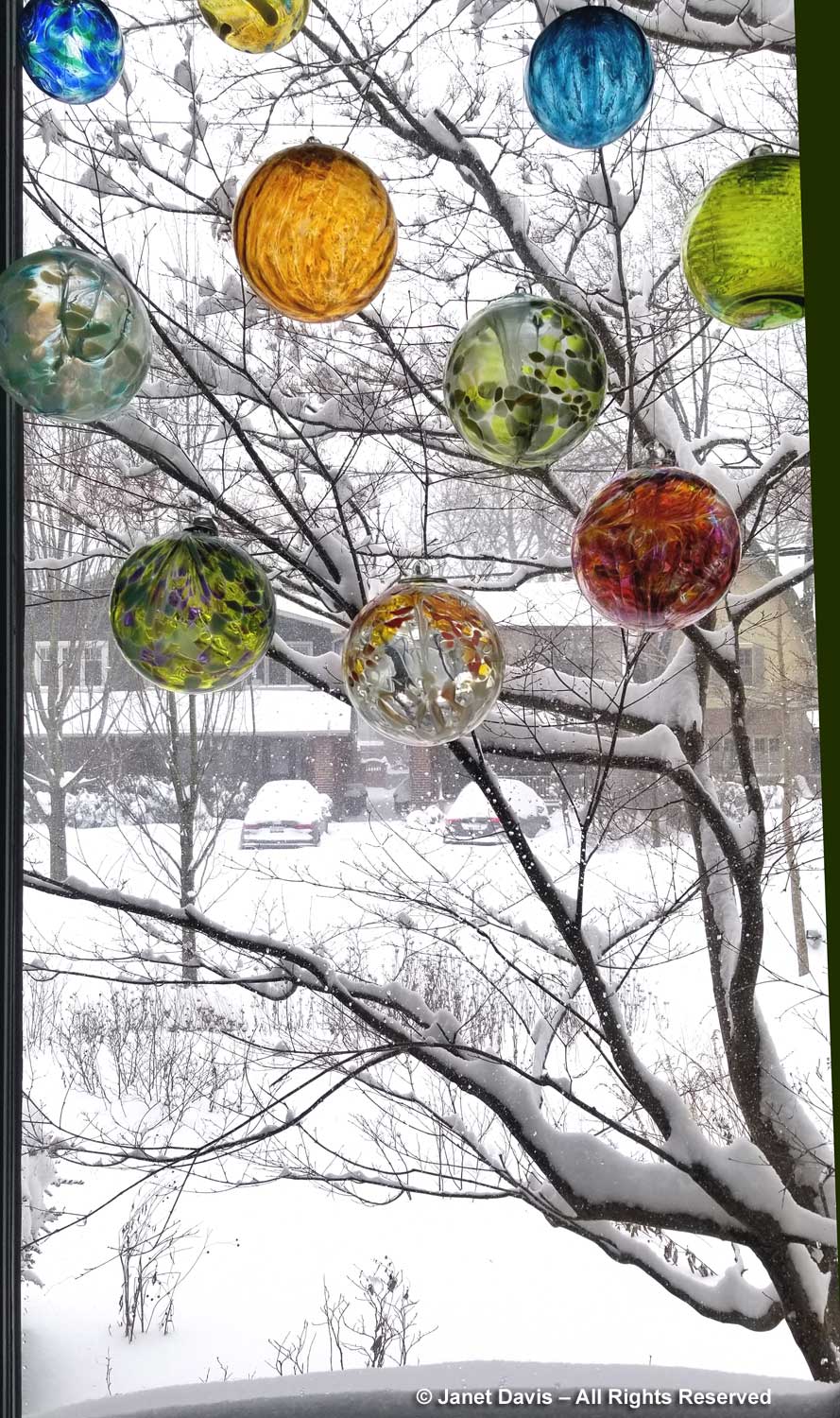
Merry Christmas to you all, and I’ll return before New Year with my final fairy crown celebrating winter in my meadows on Lake Muskoka!
**********
Did you miss a fairy crown blog in 2022? Here they are:
#1 – Spring Awakening
#2 – Little Blossoms for Easter
#3 – The Perfume of Hyacinths
#4 – Spring Bulb Extravaganza
#5 – A Crabapple Requiem
#6 – Shady Lady
#7 – Columbines & Wild Strawberries on Lake Muskoka
#8 – Lilac, Dogwood & Alliums
#9 – Borrowed Scenery & an Azalea for Mom
#10 – June Blues on Lake Muskoka
#11 – Sage & Catmint for the Bees
#12 – Penstemons & Coreopsis in Muskoka
#13 – Ditch Lilies & Serviceberries
#14 – Golden Yarrow & Orange Milkweed
#15 – Echinacea & Clematis
#16 – A Czech-German-All American Blackeyed Susan
#17- Beebalm & Yellow Daisies at the Lake
#18- Russian Sage & Blazing Stars
#19-My Fruitful Life
#20-Cup Plant, Joe Pye & Ironweed
#21-Helianthus & Hummingbirds
#22-Grasses, Asters & Goldenrod
#23-Sedums, Pass-Along Plants & Fruit for the Birds
#24-Fall Asters & Showy Goldenrod for Thanksgiving
#25-Autumn Monkshood & Snakeroot
#26-Fall Finery
